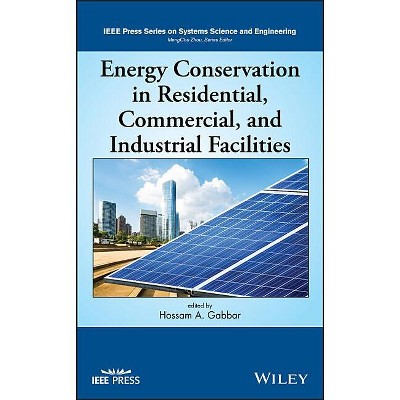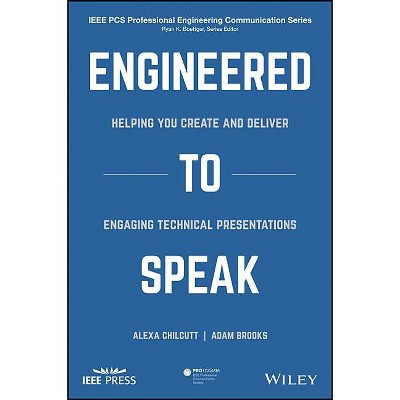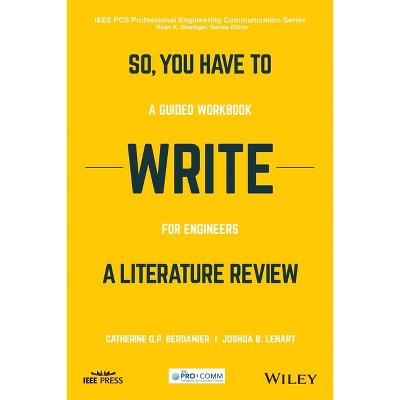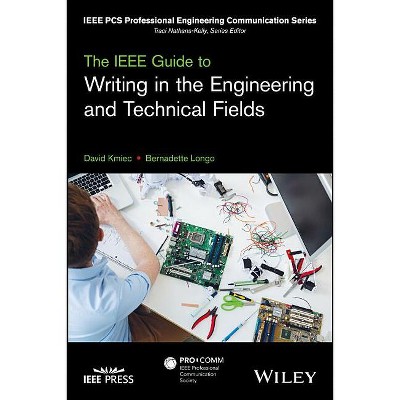Infrastructure Robotics - (IEEE Press Systems Science and Engineering) by Dikai Liu & Carlos Balaguer & Gamini Dissanayake & Mirko Kovac (Hardcover)

About this item
Highlights
- Infrastructure Robotics Illuminating resource presenting commonly used robotic methodologies and technologies, with recent developments and clear application examples across different project types Infrastructure Robotics presents state-of-the-art research in infrastructure robotics and key methodologies that enable the development of intelligent robots for operation in civil infrastructure environments, describing sensing, perception, localization, map building, environmental and operation awareness, motion and task planning, design methodologies, robot assistance paradigms, and physical human-robot collaboration.
- About the Author: DIKAI LIU, PHD, is a Distinguished Professor at the University of Technology Sydney.
- 432 Pages
- Technology, Robotics
- Series Name: IEEE Press Systems Science and Engineering
Description
About the Book
"Maintaining civil infrastructure assets, including bridges, tunnels, water mains pipes, power and telecommunication transmission towers, underwater wharf piles and sewers, has traditionally been labor intensive, and often hazardous for workers. It has also been strictly constrained by humans' limits and health/safety requirements. Three aspects of maintenance that are common to a variety of types of infrastructure include inspection, preventative and rehabilitation actions, and assessment of condition and asset management. The need for safe, efficient, and effective infrastructure maintenance has led to a desire, across industry sectors, to automate maintenance operations. Intelligent robots, that can work either on their own or collaboratively with humans in a complex (e.g. steel bridges) or dynamically changing (e.g. underwater) structural environment, provide a very promising solution to automating maintenance operations."--Book Synopsis
Infrastructure RoboticsIlluminating resource presenting commonly used robotic methodologies and technologies, with recent developments and clear application examples across different project types
Infrastructure Robotics presents state-of-the-art research in infrastructure robotics and key methodologies that enable the development of intelligent robots for operation in civil infrastructure environments, describing sensing, perception, localization, map building, environmental and operation awareness, motion and task planning, design methodologies, robot assistance paradigms, and physical human-robot collaboration. The text also presents many case studies of robotic systems developed for real-world applications in maintaining various civil infrastructures, including steel bridges, tunnels, underground water mains, underwater structures, and sewer pipes. In addition, later chapters discuss lessons learned in deployment of intelligent robots in practical applications overall.
Infrastructure Robotics provides a timely and thorough treatment of the subject pertaining to recent developments, such as computer vision and machine learning techniques that have been used in inspection and condition assessment of critical civil infrastructures, including bridges, tunnels, and more.
Written by highly qualified contributors with significant experience in both academia and industry, Infrastructure Robotics covers topics such as:
- Design methods for application of robots in civil infrastructure inspired by biological systems including ants, inchworms, and humans
- Fundamental aspects of research on intelligent robotic co-workers for human-robot collaborative operations
- The ROBO-SPECT European project and a robotized alternative to manual tunnel structural inspection and assessment
- Wider context for the use of additive manufacturing techniques on construction sites
Infrastructure Robotics is an essential resource for researchers, engineers, and graduate students in related fields. Professionals in civil engineering, asset management, and project management who wish to be on the cutting edge of the future of their industries will also benefit from the text.
From the Back Cover
Illuminating resource presenting commonly used robotic methodologies and technologies, with recent developments and clear application examples across different project types
Infrastructure Robotics presents state-of-the-art research in infrastructure robotics and key methodologies that enable the development of intelligent robots for operation in civil infrastructure environments, describing sensing, perception, localization, map building, environmental and operation awareness, motion and task planning, design methodologies, robot assistance paradigms, and physical human-robot collaboration. The text also presents many case studies of robotic systems developed for real-world applications in maintaining various civil infrastructures, including steel bridges, tunnels, underground water mains, underwater structures, and sewer pipes. In addition, later chapters discuss lessons learned in deployment of intelligent robots in practical applications overall.
Infrastructure Robotics provides a timely and thorough treatment of the subject pertaining to recent developments, such as computer vision and machine learning techniques that have been used in inspection and condition assessment of critical civil infrastructures, including bridges, tunnels, and more.
Written by highly qualified contributors with significant experience in both academia and industry, Infrastructure Robotics covers topics such as:
- Design methods for application of robots in civil infrastructure inspired by biological systems including ants, inchworms, and humans
- Fundamental aspects of research on intelligent robotic co-workers for human-robot collaborative operations
- The ROBO-SPECT European project and a robotized alternative to manual tunnel structural inspection and assessment
- Wider context for the use of additive manufacturing techniques on construction sites
Infrastructure Robotics is an essential resource for researchers, engineers, and graduate students in related fields. Professionals in civil engineering, asset management, and project management who wish to be on the cutting edge of the future of their industries will also benefit from the text.
About the Author
DIKAI LIU, PHD, is a Distinguished Professor at the University of Technology Sydney.
CARLOS BALAGUER, PHD, is a Full Professor at University Carlos III of Madrid (UC3M).
GAMINI DISSANAYAKE, PHD, is an Emeritus Professor at the University of Technology Sydney.
MIRKO KOVAC, PHD, is Director of the Aerial Robotics Laboratory at Imperial College London and the Head of the Laboratory of Sustainability Robotics at the Swiss Federal Laboratories for Material Science and Technology (Empa).











